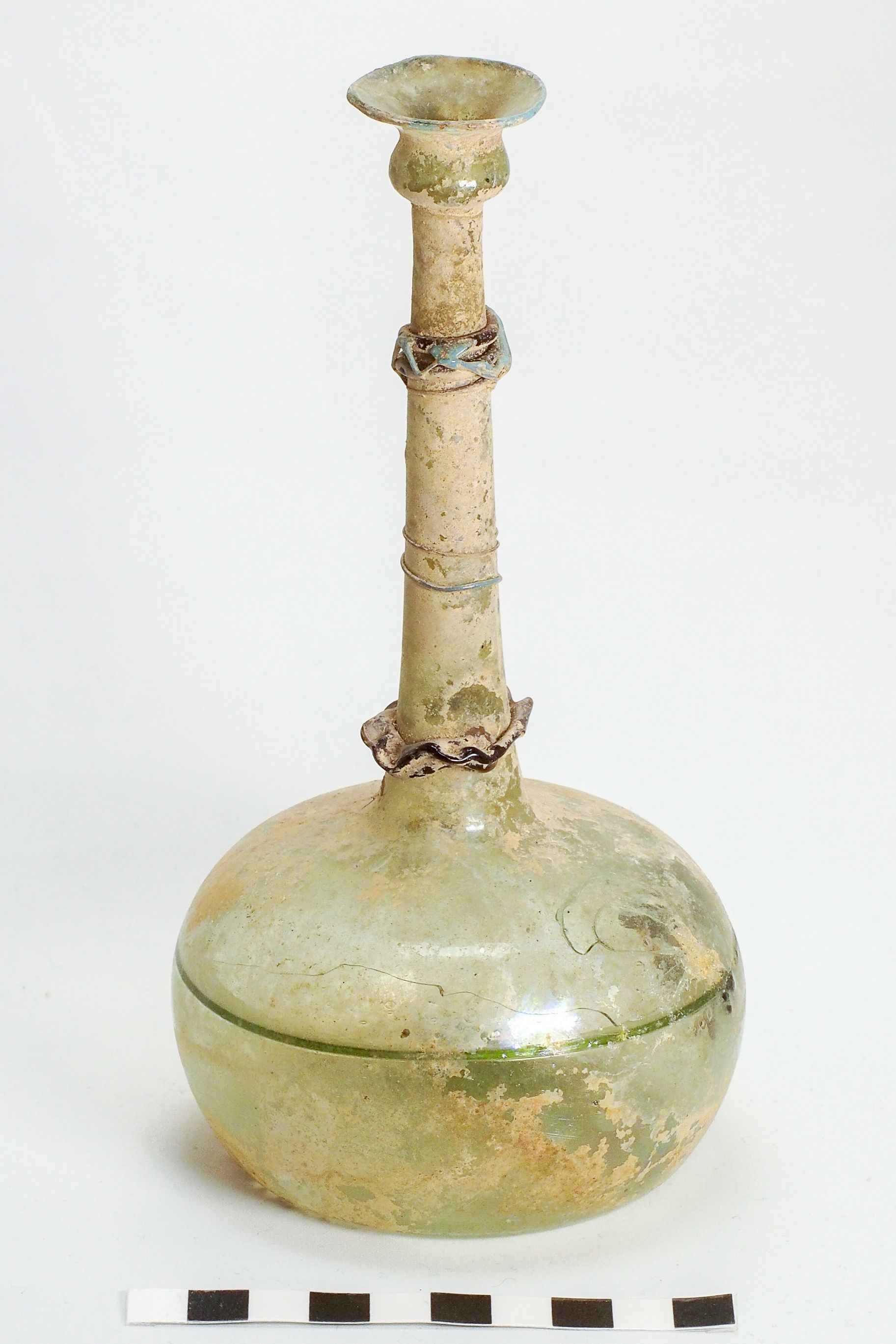Islamic Sprinkler
Name/Title
Islamic SprinklerEntry/Object ID
11NE-Mi13-151Description
The rim and mouth are round but irregular on one side. The neck is cylindrical with a bulge at the top and three bands of applied decoration below: the top band is made up of four dark blue concentric rings with a turquoise cage trailed around it; the second band begins at the top band and is trailed around the neck four times in the same colour as the neck and body; the lower band is a thick dark blue band pinched into a wave pattern. There is an approximately 5mm collar running through the midpoint of the bulbous body. The base is deep and concave with a pontil mark. A small hole to the body was repaired, the spreading fractures from the hole are stable, there is trace encrustation, and an old collection label to the base.Use
Perfume VesselContext
The collar running through the midline of the body was made by impressing a sharp-pointed tool into the hot glass then drawing the tool around the circumference of the vessel. This manipulation creates an inwardly protruding collar; when the light is transmitted through the thick collar, it creates the illusion of a darker coloured band. Tall-necked decorated sprinkler bottles such as this are the last items of Islamic glass to be dated to the Medieval period. Sprinklers held perfumes, oils, and other costly liquids. The neck of a sprinkler vessel is nearly fully closed as a diaphragm with a small central aperture sitting at the base of its neck. The small aperture allows the liquid contents within the bottle to be emptied drop by drop so the user could apply the liquid sparingly. During the Islamic Golden Age and Medieval period, sprinklers most commonly contained rosewater. Rosewater was often used in the context of meals, as the host and their guests would wash their face and hands with rosewater after they had consumed their meal. After the meal, the party would retire to couches where the guests themselves or their servants would use the sprinklers to lightly spray the guest's clothes and faces with the refreshing rosewater.Made/Created
Date made
1000 CE - 1200 CETime Period
Islamic Golden AgeEthnography
Culture/Tribe
Near Eastern - Islamic

